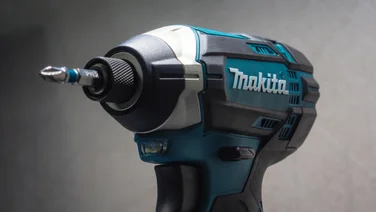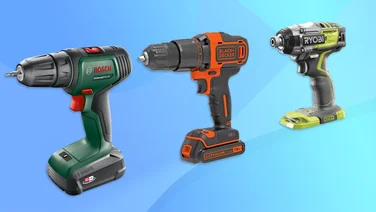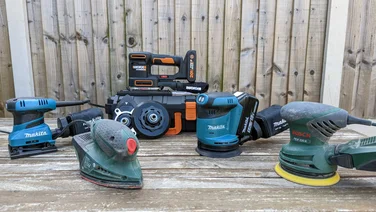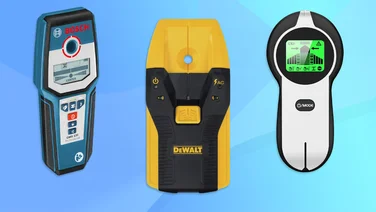To help us provide you with free impartial advice, we may earn a commission if you buy through links on our site. Learn more
- Best multimeter: At a glance
- How we test multimeters
- The best multimeters you can buy in 2024
- 1. AstroAI DM6000AR digital multimeter: Best-value, most feature-packed multimeter
- 2. Draper Auto & Manual Ranging Digital Multimeter (92433): Best multimeter overall
- 3. TIS 258: Best budget multimeter
- 4. Draper Automotive Digital Multimeter (41822): Best automotive multimeter
- 5. Sealey MM102: Best multimeter for ease of use
- 6. Rolson 27259: Best cheap multimeter
- 7. Kewtech AC/DC Multimeter & Temperature Probe 600V: Best multimeter for measuring temperature
- How to choose the best multimeter for you

Whether you’re working on your car, attempting to repair a broken electrical item or embarking on a DIY project, a multimeter is an essential piece of kit. These compact boxes can measure and detect all sorts of things, from voltage (volts), current (amps) and resistance (ohms) to temperature, capacitance and continuity, making it simple to detect broken circuits.
There’s a vast range of devices on the market, though, and you can buy devices priced from under £10 right up into the hundreds of pounds. That makes the job of choosing one a challenge for anyone, let alone those purchasing a multimeter for the first time. To help you make your decision, we’ve tested and tried a wide range of multimeters, selecting our favourites for inclusion on this page.
You can find out how we tested just below, followed by our reviews, and if you’d like to find out more about what features to look for, check out our buying guide at the bottom of the page.
Please note: while multimeters are vital aids when investigating and diagnosing electrical faults, the usual caveats apply. If you’re at all unsure about what you’re doing, call in the experts, because even the most innocuous gadget can deliver a painful, high-voltage shock.
READ NEXT: Best paint for walls
Best multimeter: At a glance
| Best-value multimeter | AstroAI DM6000AR (~£33) | |
| Best overall multimeter | Draper 92433 (~£54) | |
| Best budget multimeter | TIS 258 (~£20) |
How we test multimeters
Accuracy is key with multimeters, so we hooked them up to a regulated power supply to see how close to the mark they were for voltage. We then measured resistance using a series of high-quality resistors, before looking at the instructions to check the readings were within the variances set out by the manufacturer.
All of the multimeters we assessed passed these tests with flying colours. We then listened to hear how loud the buzzer was for detecting continuity.
Taking each multimeter in turn, we assessed them for how clear the displays were, especially when viewed at an oblique angle. We looked for backlighting, stands, hanging hooks and cases – we prefer multimeters which have all of these. We then looked at the quality of the construction, focusing on the casing, how solid the switchgear felt and how well made the probes and leads felt.
Ease of use was critical, which is why all the units here are autoranging, but we assessed the quality of the instructions and specifications, too.
READ NEXT: Best screwdriver sets
The best multimeters you can buy in 2024
1. AstroAI DM6000AR digital multimeter: Best-value, most feature-packed multimeter
Price when reviewed: £33 | Check price at Amazon

- Great for… all-round features and build
- Not so great… lacks a case and the stand is a bit fiddly
The features that the AstroAI offers are impressive at the price. It looks and feels like a premium product, with long cables featuring dust caps and probe-tip safety shrouds, plus a large, clear screen. We found the backlighting system was slightly inconsistent, though, and the stand a little fiddly.
It’s an auto-ranging multimeter, and we found it very easy to use, aided by colour-coded sockets, a large read-out and dust covers for the leads. While substantial, the casing feels good in the hand and is easy to grip thanks to its rubberised sides, although a separate, removable case would be better at shrugging off bangs and knocks over time.
In testing, we found the continuity buzzer was pleasingly loud, and it was the most accurate in our resistance test, too, reading exactly 1kΩ when testing a 1kΩ high-stability resistor. It was only a fraction out when measuring the voltage from a highly accurate power supply, though still well within the tolerances specified in the instructions. Temperature probes rated between -40˚C and 1,370˚C and overload protection up to 600V are also mightily impressive bonuses.
Key specs – Size: 19 x 9 x 4cm (LWD); Cable length: 100cm; Backlit screen: Yes; Features: Temperature probes, resistor and capacitor testing ability, stand and hanging strap
2. Draper Auto & Manual Ranging Digital Multimeter (92433): Best multimeter overall

Price when reviewed: £42 | Check price at Amazon
- Great for… build quality and accuracy
- Not so great for… those on super tight budgets
The Draper blitzed every one of our tests. The screen is large and easy to read, and there’s a bright backlight that’s convenient for use in dark areas, such as under a staircase.
It’s auto-ranging and so easy to use and all of the buttons and dials feel superb and built to last – a theme that runs throughout, because there’s also a rubberised surround and a zip-up case. The long probes look and feel equally well constructed: they come with protective tip covers and are connected to metre-long cables.
We also liked how the probes fit snugly into gaps in the back of the rubber sleeve (though you’ll have to store the temperature probes in the zip-up case). The non-contact voltage detector is particularly noteworthy, because not only does it detect current, but a series of LEDs show how close you are to it. In terms of specs, the Draper wants for very little, with duty cycle capability and sockets to test transistors.
In our tests, accuracy was well within the tolerances set out in the instructions, and we were particularly impressed with the 1000V DC/750 AC overload protection – the best on test. Yet for all the features, Draper hasn’t forgotten the basics: the instruction manual and safety information was superb.
Key specs – Size: 19 x 9 x 6cm (LWD); Cable length: 100cm; Backlit screen: Yes; Features: Temperature probes, resistor and capacitor testing ability, stand and hanging strap
3. TIS 258: Best budget multimeter
Price when reviewed: £20 | Check price at Toolstation

- Great for… budget-conscious buyers
- Not so great for… working in poorly lit environments (the backlight turns off too quickly)
As a multimeter that does it all on a budget, the TIS 258 takes some beating, with strong specs and impressive performance across the board.
It’s a solid-feeling unit with a bright red rubber cover that feels good in the hand. It’s fairly compact, although the slots in the rear of the rubber cover (for stowing the high-quality probes) means it’s quite thick – it might be necessary to remove the cover if you’re working in tight spaces.
The combination of an integral stand, and slot to hang it on a hook, means it’s ergonomically sound and a temperature measurement range of -20 to 750˚C and overload protection up to 600v is also impressive for this money.
Most of the controls are accessed via the dial, but we did find some irritations. Having to push a button to toggle between AC and DC operation could cause some confusion and we find it hard to see why the screen light button needs quite so long a press to activate; it also switches itself off again rather too quickly.
Still, the backlight is bright and the screen is large and legible, while the instructions – supplied in a proper booklet rather than on a single sheet of paper – are well-written and concise.
It came second place for accuracy in our tests, too, so there’s plenty of performance on offer here, along with an appealing price tag.
Key specs – Size: 15 x 7 x 5cm (LWD); Cable length: 87cm; Backlit screen: Yes; Features: Integral probe storage, stand and hook, dust covers, temperature function, hold mode
4. Draper Automotive Digital Multimeter (41822): Best automotive multimeter
Price when reviewed: £42 | Check price at Halfords

- Great for… advanced automotive applications
- Not so great for… cable robustness
The Draper 41822 bundles much of what we like about the 92433 above – build quality, long leads, zip-up case and temperature probes – into a smaller case.
It has a slot allowing it to hang, plus a fold-out stand and probe storage at the back, although there’s no non-contact voltage detection. What makes the 41822 stand out is its range of automotive-specific features: it defaults to automotive-appropriate DC and is able to measure the dwell time for four, six and eight-cylinder engines. Dwell angle can be measured for four, five, six and eight-pot engines and, by clamping the supplied inductive pick-up to a spark plug wire, it’s also able to accurately measure engine RPM.
In our tests, we found this Draper to be among the most accurate for measuring voltage and resistance and we particularly liked the relative mode, which enables the unit to store the present reading as a point of reference for any subsequent readings. Our criticisms are few, but we’d like the temperature cables and plugs to feel a little more robust. It might not be your first choice multimeter for mains work either, because it defaults to DC.
Key specs – Size: 15 x 7 x 4.5cm (LWD); Cable length: 82cm; Backlit screen: Yes; Features: Integral probe storage, stand, dust covers, temperature function, hold mode
5. Sealey MM102: Best multimeter for ease of use

Price when reviewed: £42 | Check price at eBay
- Great for… ease of use, non-contact voltage detection
- Not so great for… using in the dark or dim places
For the novice, the Sealey MM102 is ideal. There are just four options on the main dial to measure AC and DC voltages, resistance and capacitance, with further modes for continuity, while diode testing is accessible at the press of a button.
There’s a non-contact voltage detector in the top, but while there is a torch (which requires a button to be pressed continually to illuminate), there’s no backlighting for the screen, which seems like a strange omission. And while we’re on the downsides, the instructions are printed on a few sheets of particularly thin paper.
But there’s little to criticise about the Sealey in operation. It’s remarkably straightforward to use and, in our tests, its measurements were well within the variance outlined in the instructions. The leads are hardwired into the unit, meaning there’s no ambiguity over which socket to connect them to (though the flipside of this is that the whole unit would need to be replaced if anything was damaged).
The Sealey is only a little larger than a packet of playing cards, so it genuinely is pocket-sized and perfect for popping in a classic car’s glove box to trace any faults. If you’re taking your first step into electronics, this could be the multimeter for you.
Key specs – Size: 15 x 6 x 3.5cm (LWD); Cable length: 90cm; Backlit screen: No; Features: Integral probe storage, torch, non-contact voltage detection
6. Rolson 27259: Best cheap multimeter
Price when reviewed: £8.50 | Check price at Halfords

- Great for… occasional fault finding
- Not so great for… use in dark places
It’s genuinely difficult to comprehend how Halfords is able to market a multimeter for under £10, especially when you consider that it includes a PP3 battery – something that could easily cost a quarter of the purchase price to replace. No, it’s not the last word in material quality – hardly a surprise at this price – and there’s no backlighting, but for occasional use, the Rolson is pretty much unbeatable.
The instructions are clear, but it’s a shame they’re printed on such thin paper. Its ability to test transistors is a pleasant surprise given the purchase price, while the screen is crisp, and the clear white-on-black lettering means it’s easy to comprehend. And those compact dimensions mean it’s a cinch to work with in tight spaces, which is just as well given there’s no built-in stand or hook.
But for most operations, only leads which are fiddly to plug into the unit, and manual ranging, count against it. It was the least accurate in our test, too, but even then only by a tiny margin and still well within the tolerances outlined in the instructions. It’s our top choice if you’re on a very strict budget.
Key specs – Size: 13 x 7 x 2.5cm (LWD); Cable length: 75cm; Backlit screen: No; Features: NPN and PNP transistor testing
7. Kewtech AC/DC Multimeter & Temperature Probe 600V: Best multimeter for measuring temperature

Price when reviewed: £66 | Check price at Screwfix
- Great for… temperature and frequency measurements
- Not so great for… those on a tight budget, use in dark corners
There’s a pleasing professional feeling about the Kewtech. It autoranges, but the ranges can also be manually selected (the only multimeter here with such a function). We also like the relative function that allows measurements to be stored, and its ability to measure frequencies and duty cycles. The ability to easily cycle through AC and DC measurements at the touch of a button, rather than a twist of the dial, is handy, too.
Yet despite the pro appearance, colour coding of dial options and corresponding buttons makes it easy to use, and off positions on both ends of the dial are convenient. All this considered, it’s the high-quality temperature probe that really stands the Kewtech apart: rather than feeling like an afterthought, the probe has been made extremely well.
It’s long enough to reach into tight gaps and is capable of not only withstanding but also reading temperatures of up to 300°C. During our voltage and resistance tests, its readings were consistent and accurate, well within the variances outlined in the comprehensive instructions.
Key specs – Size: 16 x 8 x 4.5cm (LWD); Cable length: 95cm; Backlit screen: No; Features: Colour coded dials, two pin temperature plug with metal probe
How to choose the best multimeter for you
How much should I spend?
A basic multimeter can cost less than £10, which is remarkable value when you consider they can still come with a battery. Whether you need to spend more will largely come down to how frequently you’re using it. Of course, spending a little more means that you may find additional features that may be useful, such as longer cables, alligator clips, a temperature probe or a carry case.
READ NEXT: Best sanders
Where will you use it?
It’s useful to think about where you might use your multimeter. A small multimeter might be useful if you’re carrying it in your pocket between jobs, but the trade-off is that you’re probably going to be dealing with a smaller display and the cables might be short. On the other hand, a large multimeter might be tricky to use if you’re working in confined spaces.If most of your testing is carried out on a workbench, a multimeter with a stand or a hanging hook might be useful. If you’re likely to be throwing your multimeter in the bottom of a tool bag then a carry case is important since they are fragile pieces of kit.
What features do you need?
Unless you are an experienced user, we would suggest choosing a multimeter that is auto-ranging. This automatically selects the correct range of Volts, Ohms or Amps to operate in. Historically, manual ranging multimeters were considered more accurate but the latest equipment, as our tests discovered, are perfectly accurate.
A ‘hold’ function freezes the readings a multimeter takes, making it easier to record any measurements that are fluctuating. Not all multimeters can measure capacitance but it’s worth looking for this feature as bad capacitors are often the cause of faulty circuits and it’s helpful to be able to measure them to see if they’ve fallen out of tolerance.
It might also be useful to have a multimeter that measures temperature – usually meters that do this are supplied with a K-type thermocouple.
Finally, some multimeters also have non-contact voltage detection – this means the meter can be used for safely checking whether voltage is still present in a system or not – so you can be sure it’s safe to work on.









